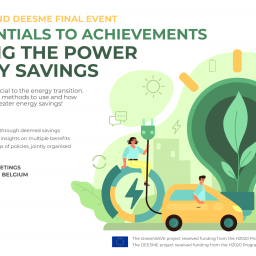
This article was originally posted on the RAP website.
The European Union is entering a crucial decade in its energy transition, with the 55% climate goal representing a step change in ambition. Energy efficiency is expected to play a major role in achieving necessary reductions in energy consumption across buildings, transport and industry. Enacting the Energy Efficiency First principle will require reliable data on the costs and benefits of energy efficiency actions, to ensure that policy measures are as effective as possible. Providing this reliable data is the role of evaluation, measurement and verification.
Yet the current reporting obligations on Member States under the Energy Efficiency Directive (EED) — and Member States’ compliance — do not supply reliable and timely information on the key performance indicator for energy efficiency policy measures: energy savings. This paper recommends improvements in evaluation, measurement and verification practices as a way of increasing the impact of the EED and enabling implementation of the Energy Efficiency First principle.
The paper gives clear guidance for the European Commission and Member States to implement seven recommendations for:
- Independently evaluating energy savings reported under the EED energy savings obligation.
- Focusing impact evaluation efforts on assessing the costs and benefits of meeting policy goals.
- Mandating the piloting of pay-for-performance using metered savings in the buildings sector.
- Providing clear pathways for accessing individual dwellings’ smart meter data.
- Mandating the publication of verification reports by Member States every two years, alongside the reporting of energy savings.
- Facilitating knowledge and expertise sharing on evaluation, measurement and verification across Member States.
- Regularly assessing the accuracy and consistency of energy savings estimates across Member States.
With the EED being renegotiated, now is the time to make the changes that will enable energy efficiency to play its full role in the energy transition.






